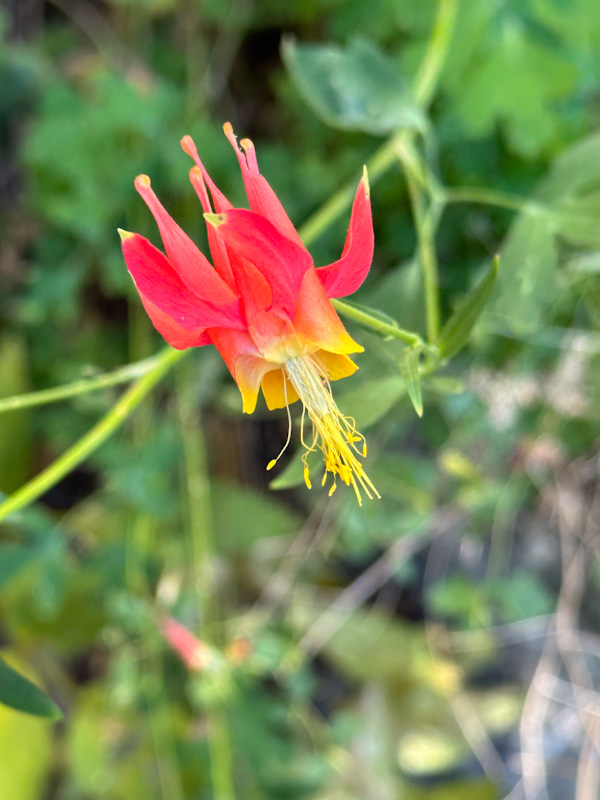
Common Names: Western Columbine, Crimson Columbine, Red Columbine
Synonyms: Aquilegia formosa
Taxonomy: Buttercup or Crowfoot (Ranunculaceae)
Habit: perennial forb, herb
Size: up to 3’
Flowers: red, yellow
Bloom: Apr, May, Jun , Jul, Aug
Leaves:
Fruit: Follicle (Dry, dehiscent fruit)
Description:
Leaves are mostly basal, and divide into threes two times (resulting in 9 leaflets). They are 4-10” (10-40 cm) long, with long stalks. The leaflets are deeply lobed, and distinctly separated. They are usually hairy, and are a bright green above and paler underneath. Flowers are about 5 cm long and red and yellow in color. The flowers of Aquilegia have a distinctive appearance. They have five sepals and petals (sometimes 4), and the sepals are often brightly colored. The petals have spurs that run between the sepals. The flowers are bisexual and have a radial symmetry. For western columbine, the combination of flower color is striking with both red sepals and spurs contrasted with yellow blades. The flowers are nodding to hanging downwards and the spurs are straight. The primary pollinators are hummingbirds, although bees, butterflies, and flies will also visit flowers. The flowers are edible, with a sweet taste—though the seeds can be fatal if eaten
Distribution: AK, CA, ID, MT, NV, OR, UT, WA, WY
Seen: NV, Mount Charleston
Habitat: chaparral, oak woodland, mixed-evergreen or coniferous forest, below 11,000’ (3300 m). Moist, rocky soils, but will grow in dry, nutrient poor soil.



References:
